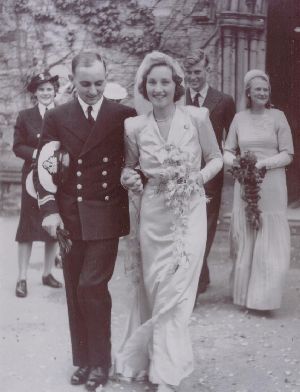- Author
- Rischbieth, H.G., Surgeon-Lieutenant, RAN
- Subjects
- Biographies and personal histories, History - WW2
- Tags
-
- RAN Ships
- HMAS Warramunga I, HMAS Shropshire
- Publication
- June 2008 edition of the Naval Historical Review (all rights reserved)
On board the Missouri was signed the surrender of Japan to the Allied Nations.
The day was dull and calm, with hardly a breath of air to disturb the profound hush that lay over Tokyo Bay – there was everywhere a suppressed excitement. On board the mighty Missouri – this must have been even more pronounced, but we were too far away to see much of the happenings aboard her. From an early hour, there was a steady stream of boats to her as she lay in the centre of the bay, with her guns pointing skyward.
Overhead, roared hundreds and hundreds of planes as the time for the surrender approached. Headed by Super-Fortresses, they made a magnificent and inspiring spectacle, a reminder, if any be needed to the Japanese delegation, of the might of the Allied Nations.
We listened aboard, as you probably did, to the broadcast of the surrender proceedings, and when General MacArthur said ‘these proceedings are now closed’, one could not help wondering whether he was referring not only to the surrender proceedings, but to the proceedings of the last six years – War.
I’m sure that all of us will pray and work for Peace, and if only the same magnificent effort can be put into it by everyone as they put into the War, then ‘Peace in our time and in our children’s time’ will be our just reward.

In a few minutes, I am going to Shropshire to a church service – to thank God for sparing us all and bringing us safely through.
This morning on board, we had a different surrender ceremony – of the ‘inadequate’ beards, and I am afraid that tomorrow, mine will meet a fate which is both hard and unjust – it is only 5/8 as old as most and yet it was expected to compete with them; and now it is to be cut off before even reaching its prime.
Well, I’ve a lot of letters to write today, so I’ll dash off one or two before I go.
Afterwards G Hermon Gill reported in Royal Australian Navy 1942 – 1945 ‘…of the ships of the Australian Squadron, Hobart and Warramunga sailed for refit during September.’
Before Warramunga sailed for Sydney, she made three voyages from Tokyo, to Hamamatsu, Sendai and Kamaishi. The object of each operation was the removal of prisoners of war from Japanese prison camps.
On the Sendai trip Warramunga embarked 179 persons, including 32 women and 15 children. Commander M.J. Clark, commanding officer of Warramunga, described the ship’s passenger list as a ‘very mixed bag, but in many ways reminiscent of the Tobruk Ferry.




